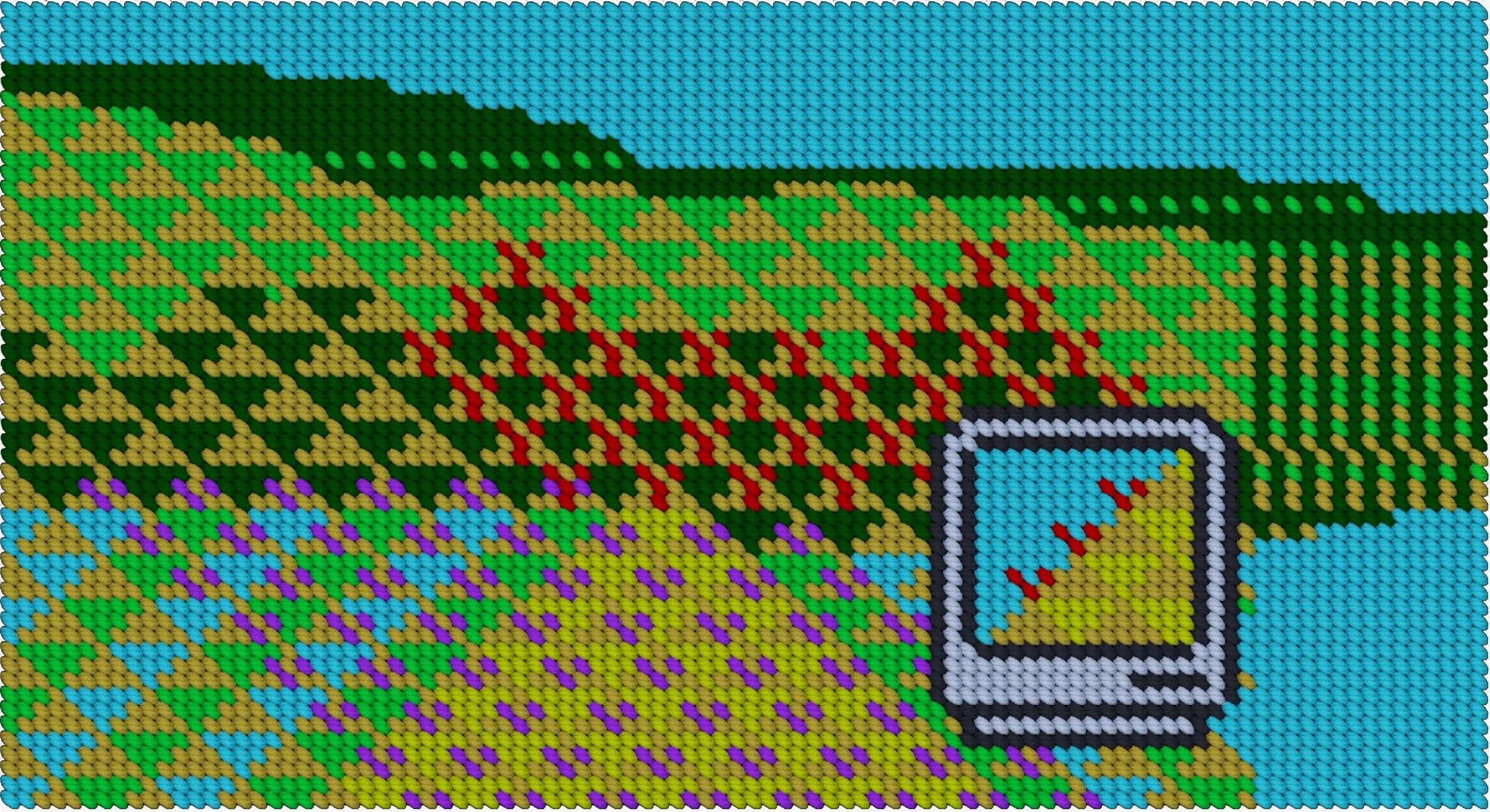Cat Mazza, animation still from By & By: With Psychedelic Features, 2024, 5:26 minutes, with sound by Ross Goldstein.
Network: Cat Mazza
GALLERY 360, NORTHEASTERN UNIVERSITY, november 14, 2024 - april 12, 2025
The textile arts are among our most ancient technologies. Long practiced by hand and in households, they are also bound up in innovation and industrialization, economic and social change. New England-based Cat Mazza works at the intersection of textiles, technology, and “tactical media,” combining craft and new media to probe urgent issues from modern warfare to the understanding and treatment of mental health conditions.
In Network, the artist takes up two entangled threads: labor and social change, and networks and communities. Many of the knitworks on view draw on archival materials, mapping the interwoven histories of textile manufacture, labor organizing, and feminism. In the eighteenth century, the invention of mechanized spinning machines ushered in early industrial capitalism, spurring new forms of factory production, the increasing division and organization of labor, and global trade networks. By the early nineteenth century in New England, textile mill strikes against increased hours and diminished (and gender-disparate) pay in Pawtucket, Rhode Island, and Lowell, Massachusetts, led to the first unions of working women in American history.
Recently, Mazza has focused her practice on networks of intergenerational skill-sharing and sampling, from pre-industrial stitching circles to the global migration of visual forms and influences. Shuttling between the analogue and the digital, many of the works use the early freeware application knitPro (2004) that Mazza developed with programmer Eric St Onge to translate digital images into stitchable patterns online. Allowing for both individual idiosyncrasy and collective action, knitPro has supported a series of “micro-revolts” against sweatshop labor, and, most recently, a Covid-responsive participatory project installed at Northeastern Crossing. Other works employ knitPro’s moving image offshoot, Knitoscope, developed with Shawn Lawson, to translate digital video into knitted animations. Exploring questions of labor and technology, craft and community, Network prompts viewers to consider their own textile and tactile entanglements in turn.


